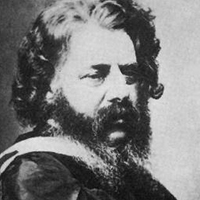William John Macquorn Rankine
William John Macquorn Rankine FRSE FRS was a Scottish mechanical engineer who also contributed to civil engineering, physics and mathematics. He was a founding contributor, with Rudolf Clausius and William Thomson, to the science of thermodynamics, particularly focusing on the first of the three thermodynamic laws.
William John Macquorn Rankine, a Scottish engineer and physicist and one of the founders of the science of thermodynamics, particularly in reference to steam-engine theory.
Trained as a civil engineer under Sir John Benjamin MacNeill, Rankine was appointed to the Queen Victoria chair of civil engineering and mechanics at the University of Glasgow (1855). One of Rankine’s first scientific works, a paper on fatigue in metals of railway axles (1843), led to new methods of construction. His Manual of Applied Mechanics (1858) was of considerable help to designing engineers and architects. His classic Manual of the Steam Engine and Other Prime Movers (1859) was the first attempt at a systematic treatment of steam-engine theory. Rankine worked out a thermodynamic cycle of events (the so-called Rankine cycle) used as a standard for the performance of steam-power installations in which a condensable vapour provides the working fluid.
In soil mechanics his work on earth pressures and the stability of retaining walls was a notable advance, particularly his paper “On the Thermodynamic Theory of Waves of Finite Longitudinal Disturbance.”
Among his most important works are Manual of Applied Mechanics (1858), Manual of the Steam Engine and Other Prime Movers (1859) and On the Thermodynamic Theory of Waves of Finite Longitudinal Disturbance.

William John Macquorn Rankine
Date of Birth: 05 Jul 1820
Birth Place: Edinburgh, United Kingdom
Proffession: Scottish engineer
Nationality: United Kingdom
Death: 24 December 1872, Saint Vincent Street


